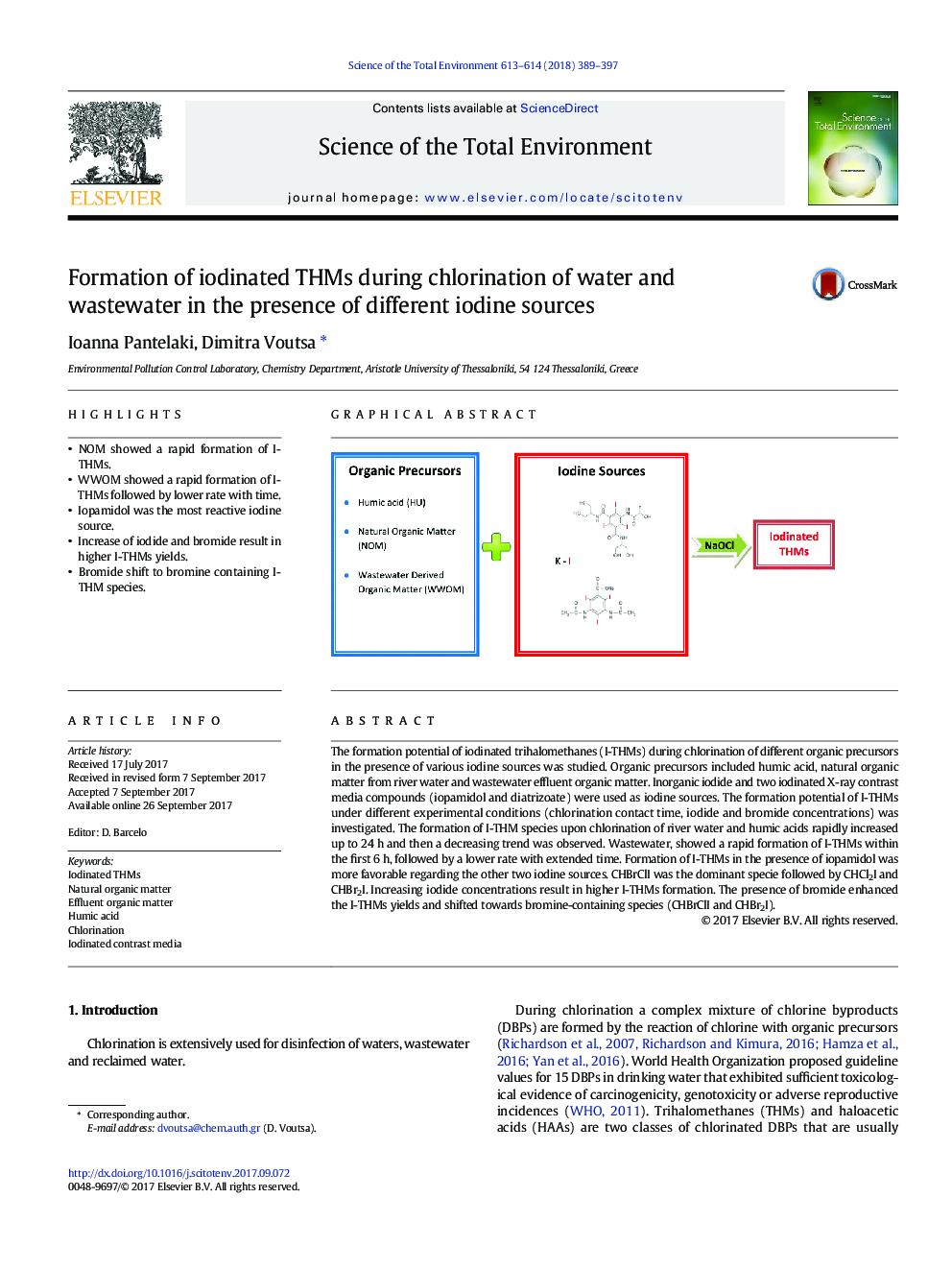| کد مقاله | کد نشریه | سال انتشار | مقاله انگلیسی | نسخه تمام متن |
|---|---|---|---|---|
| 5750101 | 1619690 | 2018 | 9 صفحه PDF | دانلود رایگان |

- NOM showed a rapid formation of I-THMs.
- WWOM showed a rapid formation of I-THMs followed by lower rate with time.
- Iopamidol was the most reactive iodine source.
- Increase of iodide and bromide result in higher I-THMs yields.
- Bromide shift to bromine containing I-THM species.
The formation potential of iodinated trihalomethanes (I-THMs) during chlorination of different organic precursors in the presence of various iodine sources was studied. Organic precursors included humic acid, natural organic matter from river water and wastewater effluent organic matter. Inorganic iodide and two iodinated X-ray contrast media compounds (iopamidol and diatrizoate) were used as iodine sources. The formation potential of I-THMs under different experimental conditions (chlorination contact time, iodide and bromide concentrations) was investigated. The formation of I-THM species upon chlorination of river water and humic acids rapidly increased up to 24Â h and then a decreasing trend was observed. Wastewater, showed a rapid formation of I-THMs within the first 6Â h, followed by a lower rate with extended time. Formation of I-THMs in the presence of iopamidol was more favorable regarding the other two iodine sources. CHBrClI was the dominant specie followed by CHCl2I and CHBr2I. Increasing iodide concentrations result in higher I-THMs formation. The presence of bromide enhanced the I-THMs yields and shifted towards bromine-containing species (CHBrClI and CHBr2I).
171
Journal: Science of The Total Environment - Volumes 613â614, 1 February 2018, Pages 389-397